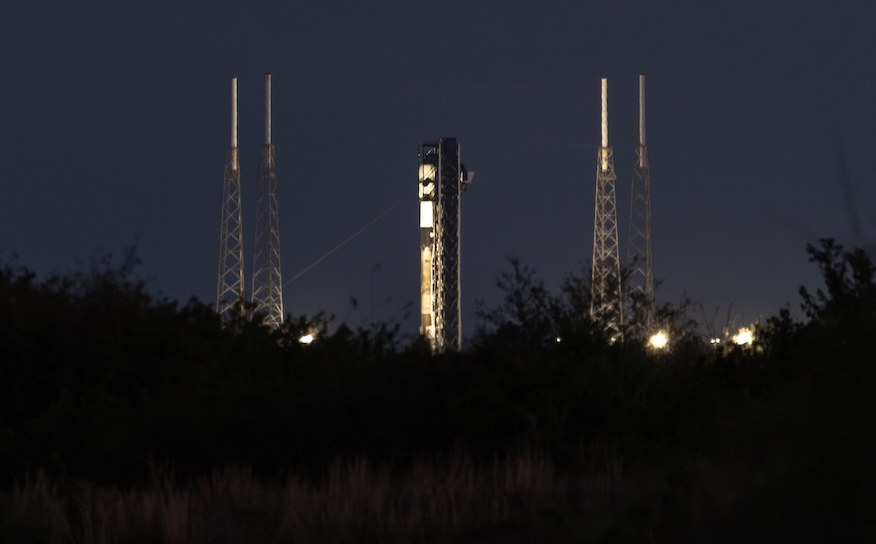The SpaceX Starlink 12-21 mission from Cape Canaveral Space Force Station has been scrubbed for a second consecutive night, leaving space enthusiasts eager for updates. Initially slated for launch, the mission faced repeated setbacks due to unfavorable weather conditions and concerns regarding the Falcon 9 booster. This delay highlights the complexities and challenges inherent in spaceflight operations, where safety and reliability remain paramount. This article delves into the reasons behind the scrubbed launch, the revised schedule, and the significance of the Starlink 12-21 mission for SpaceX’s ongoing efforts to expand its satellite internet constellation.
Understanding the factors contributing to launch delays is crucial for appreciating the intricate processes involved in space exploration. From weather patterns to technical inspections, numerous variables can impact the timeline of a mission. This article aims to provide a comprehensive overview of the situation, offering insights into the current status of the Starlink 12-21 launch and its implications for the future of space-based internet connectivity.
Adverse Weather Conditions and Booster Concerns Halt Launch
The primary reason cited for the scrubbed launch was high ground-level winds at Cape Canaveral. The 45th Weather Squadron had initially forecasted favorable weather conditions; however, upper-level wind shear and booster recovery weather became watch items, ultimately leading to the postponement. SpaceX prioritizes safety, and adverse weather conditions can pose significant risks to both the launch vehicle and the payload.
Additionally, concerns surrounding the Falcon 9 booster played a role in the decision to delay the launch. The booster, designated B1069, was slated for its 22nd flight, a testament to SpaceX’s reusability program. However, following a fuel leak incident during the Starlink 12-20 mission, SpaceX has been extra cautious in assessing the reliability of its boosters. As Kiko Dontchev, the vice president of Launch for SpaceX, stated,
‘As much as we love launching rockets, nothing is more important than safety and reliability.’
New Target Launch Date: Wednesday Following Crew-10 Mission
Following the second scrub, SpaceX has set a new target launch date for the Starlink 12-21 mission: Wednesday, following the Crew-10 mission. The launch window is scheduled for 10:20 p.m. EDT (0220 UTC) from pad 40 at Cape Canaveral Space Force Station, pending weather conditions and further booster inspections. Spaceflight Now will provide live coverage beginning approximately one hour before liftoff.
The decision to postpone the launch until after the Crew-10 mission underscores SpaceX’s commitment to prioritizing crewed spaceflights. NASA officials have expressed confidence in the Falcon 9’s readiness for the Crew-10 mission, even with the ongoing investigation into the B1086 fuel leak. NASA wrote in a blog post on Tuesday evening that they found sufficient evidence to provide clearance to proceed with the crewed launch.
Starlink 12-21: Enhancing Connectivity with V2 Mini Satellites
The Starlink 12-21 mission aims to deploy 21 Starlink V2 Mini satellites into low Earth orbit, further expanding SpaceX’s global satellite internet constellation. Notably, 13 of these satellites feature Direct to Cell capabilities, enabling mobile network operators to provide seamless access to text, voice, and data services worldwide.
The Direct to Cell technology represents a significant advancement in satellite communications, potentially bridging connectivity gaps in remote and underserved areas. By integrating satellite services directly into existing cellular networks, SpaceX aims to enhance mobile coverage and provide reliable internet access to a broader range of users.
Falcon 9 Booster B1069’s 22nd Flight and Landing Attempt
This mission marks the 22nd flight for the Falcon 9 first stage booster B1069. Following liftoff, the booster will attempt a landing on the droneship, ‘A Shortfall of Gravitas,’ marking a crucial milestone in SpaceX’s reusability program. A successful landing would be the 101st booster landing for ASOG and the 333rd booster landing to date.
Reusable boosters are a cornerstone of SpaceX’s strategy to reduce the cost of spaceflight and increase launch frequency. By recovering and reusing boosters, SpaceX can significantly lower the overall expenses associated with each launch, making space exploration more accessible and sustainable.
Addressing Recent Setbacks and Ensuring Reliability
The Starlink 12-21 mission follows a period of challenges for SpaceX, including a fuel leak during the Starlink 12-20 mission that resulted in the loss of first stage booster B1086. In response to these setbacks, SpaceX has implemented rigorous inspections and testing protocols to enhance the reliability of its Falcon 9 fleet.
Kiko Dontchev highlighted several factors contributing to the recent lack of launches, including ‘historically bad’ sea states on the West Coast, which slowed down booster and fairing recoveries. He emphasized that SpaceX has taken the opportunity to learn from past incidents and improve the overall reliability of its launch systems.
Looking Ahead: The Future of Starlink and Space Exploration
The scrubbed launch of the Starlink 12-21 mission underscores the inherent challenges and complexities of spaceflight operations. While delays can be frustrating, they also serve as a reminder of the importance of safety, reliability, and meticulous attention to detail in the pursuit of space exploration.
As SpaceX continues to expand its Starlink constellation and push the boundaries of space technology, overcoming these challenges will be crucial for achieving its long-term goals. The Starlink 12-21 mission represents a significant step forward in the quest to provide global internet connectivity and unlock the vast potential of space for the benefit of all. The mission’s success will pave the way for future advancements in satellite communications and contribute to a more interconnected world.

Leave a Reply